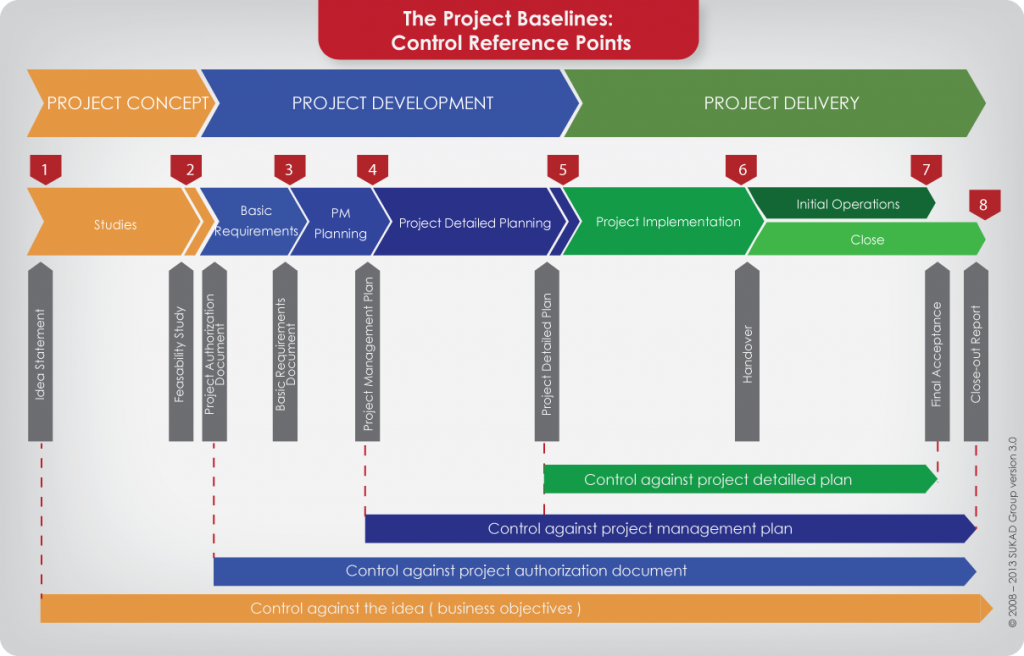Project control is vital for management of any projects. We learn to control against the plan but is there one plan on the project life span? If there is more than one plan, which plan do we control against?
Project Control
This is the fourth of a 4-part series on project control.
- In the first one we offered an introduction to the subject in addition to the traditional view of project control.
- In the second one, we introduced the first two control reference points per the CAM2P™ approach.
- The third article addressed the third and fourth control reference points.
Why Four Control Reference Points
We need to note here that we are not necessarily, and concurrently, controlling against these control reference points. In practice, these control reference points will supersede each other. We use the term moving baselines, since with each new document that supersedes prior work, such as PAD, PM Plan and PDP; the new baseline supersedes the previous one.
Why do we need four points of control?
Is this approach important?
Is not enough to control against the ‘baselines’, the one we defined per the project detailed plan?
To answer these questions, we take a step back and reverse the question, why one point only?
One reason that the traditional and common view of control starts with the project detailed plan is its linkage to project funding at final approval. Some practitioners think that unless there is an approved budget there is no need for control. In other words, they link control to the money in an approved budget.
In other cases, there is no formal control or change management unless there is a contract for services, since the view is that internal changes are part of the development and so are not true changes; changes only exist in the context of a contractual relationship.
Project control is not only about money or contracts. Project control is about variations from the plan, any variations including scope, time, cost, quality, human resources …
Notice we continue to use the word ‘plan’ and not ‘project detailed plan’ since the plan that we refer to here is any official reference that we can compare against, such as the PDP, PM Plan, and even the PAD. Therefore, we want to monitor for variations and changes throughout the project, depending on where we are on the project life span. Remember, earlier we mentioned we must treat changes to project objectives as formal changes.
Project Management Maturity and Control
OK clear, but still, what is the significance of project control during the project development stage, would not the PDP absorb all of these variations and changes and become the document that supersedes all before it?
Well yes, but is that enough?
Let us put on the organizational maturity hat.
By ‘absorbing’ these variations and changes in the PDP without a formal project control and approval mechanism, we are essentially burying or hiding these changes in the project details. If these variations and changes are due to poor planning, lack of experiences, or an inadequate project management system, then how do we know, how can we learn, and seek continual improvements? Alternatively, the changes could be due to environmental factors, changing economic conditions, or numerous other factors. It does not matter, what the reasons for variations and changes are; we need to know them, we need to understand them, and we need to document them, in order for us to learn from them and build toward higher levels of project management maturity.
We will expand on this topic in the next chapter, as we discuss project change management.

